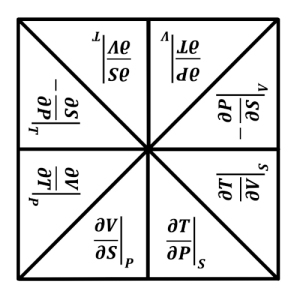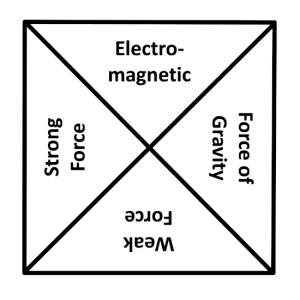 I just finished reading Tyler Volk’s “Quarks to Culture: how we came to be”. In this book Volk outlines an interesting model for what he calls combo-genesis, a “great chain of being” leading from basic physical law up through the highest organizational structures that we know of, human societies. He traces a path through human knowledge: physics, chemistry, biology, zoology, sociology, etc., and I am reminded of E. O. Wilson’s “Consilience: the unity of knowledge” that argued for some of the same things.
I just finished reading Tyler Volk’s “Quarks to Culture: how we came to be”. In this book Volk outlines an interesting model for what he calls combo-genesis, a “great chain of being” leading from basic physical law up through the highest organizational structures that we know of, human societies. He traces a path through human knowledge: physics, chemistry, biology, zoology, sociology, etc., and I am reminded of E. O. Wilson’s “Consilience: the unity of knowledge” that argued for some of the same things.
But Volk’s work has some good new ideas. He details twelve hierarchical levels, where each level is constructed on a “lower” previous level, and the new “higher” level has new things and different abilities than its predecessor. These levels range from the level of fundamental quanta (the quarks of the title), to geo-political states (the culture of the title).
- QUA: fundamental quanta
- PRO: nucleons, which are protons and neutrons
- NCL: atomic nuclei
- ATM: atoms
- MOL: molecules
- PCL: prokaryotic cells
- ECL: eukaryotic cells
- ANI: multicellular organisms, including animals
- ASG: animal social groups
- HUM: human tribal meta-groups
- AGR: agro-villages
- STA: geo-political states
These levels are within three dynamical realms, the first realm being of physical laws and then those realms of biological and cultural evolution. Each of these realms has a base level that has a capability for great constructive and emergent potential via an “Alpha-kit”. An alpha-kit has two facets, an element set and a cornucopia set, that operate like an alphabet and the myriad combinations that that alphabet can produce.
Dynamical realms:
- Realm of physical laws: QUA -> MOL
- Realm of biological evolution PCL -> ASG
- Realm of cultural evolution HUM -> STA
Base levels and their Alpha-kits:
- QUA, means for chemistry and molecules (atomic)
- PCL, mechanisms for biology and its evolution (genetic)
- HUM, faculty for culture and its evolution (linguistic)
As Volk’s model has each higher level based on or constructed from the previous lower one, I make the following suggestion utilizing my four-fold  Structure-Function. The structures of each lower level serve as the parts of the next higher level, and the functions of each lower level serve as the actions of the next higher level. In this way a chain of actions and parts, structures and functions are built giving different entities and capabilities to different operational domains.
Structure-Function. The structures of each lower level serve as the parts of the next higher level, and the functions of each lower level serve as the actions of the next higher level. In this way a chain of actions and parts, structures and functions are built giving different entities and capabilities to different operational domains.
In the diagram shown, the sets of structures (S) and functions (F) of level i are used for the sets of parts (P) and actions (A) of level i+1, so S(i)=>P(i+1) and F(i)=>A(i+1). Not all structural information or functional abilities are necessarily accessible in the higher level of parts and actions, similar to the information and method hiding in object-oriented programming, and so reducing overall complexity. And as I have argued before, parts are combined to create the structures and actions are combined to create the functions of each level, so P(i+1)=>S(i+1) and A(i+1)=>F(i+1). In this way we have a bottom-up combo-genesis leading from quarks to culture.
Not all structural information or functional abilities are necessarily accessible in the higher level of parts and actions, similar to the information and method hiding in object-oriented programming, and so reducing overall complexity. And as I have argued before, parts are combined to create the structures and actions are combined to create the functions of each level, so P(i+1)=>S(i+1) and A(i+1)=>F(i+1). In this way we have a bottom-up combo-genesis leading from quarks to culture.
Are we now entering another dynamical realm, perhaps based on some technological or computational alpha-kit? But, unfortunately we have to ask, will it take us forwards or backwards?
Further Reading:
Tyler Volk / Quarks to Culture: how we came to be
https://en.wikipedia.org/wiki/Tyler_Volk
https://blogs.scientificamerican.com/cross-check/how-quarks-turned-into-cultures/
http://www.integralworld.net/smith56.html
http://www.integralworld.net/visser114.html
https://inquisitivebiologist.wordpress.com/2019/03/06/book-review-quarks-to-culture-how-we-came-to-be/
Tyler Volk and Robert Wright discuss:
mol-2017-09-28-wright-volk
Edward O. Wilson / Consilience: the unity of knowledge
https://en.wikipedia.org/wiki/Consilience_(book)
https://en.wikipedia.org/wiki/Consilience
[*11.98, *11.99]
<>
 The Tree of Knowledge (ToK) System posits four hierarchical planes of existence having separate dimensions of complexity mapped out or studied by four different kinds of sciences:
The Tree of Knowledge (ToK) System posits four hierarchical planes of existence having separate dimensions of complexity mapped out or studied by four different kinds of sciences:










